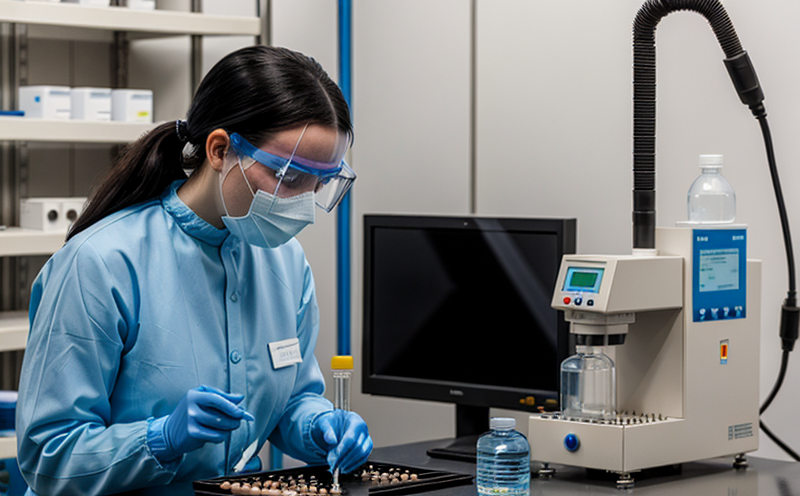Volatile Organic Impurity Headspace GC Testing
The process of Volatile Organic Impurity (VOI) Headspace Gas Chromatography (GC) testing is a critical method used in pharmaceutical quality control to ensure the purity and safety of drug products. VOI refers to organic compounds that can evaporate under normal conditions, which are often found as impurities or by-products during synthesis.
This technique involves isolating volatile substances from solid or liquid samples using headspace analysis before injecting them into a gas chromatograph for separation and quantification. This method allows for the detection of trace levels of VOIs that might not be present in the bulk material but could impact drug efficacy, safety, and regulatory compliance.
Headspace GC testing is particularly useful for complex mixtures where direct injection into a gas chromatograph would result in peak overlap. By sampling the headspace above the liquid or solid surface, this technique captures volatile components without requiring extensive sample preparation. This non-destructive approach preserves the integrity of the original material and ensures accurate results.
The testing process typically involves several steps: sample preparation, headspace equilibration, injection into the GC system, separation, detection, and quantification. The choice of extraction solvent is crucial as it affects the efficiency and selectivity of impurity identification. Common solvents include hexane or dichloromethane for their low boiling points that match many VOI characteristics.
The gas chromatograph equipped with a flame ionization detector (FID) or mass spectrometry (MS) is used to analyze the separated compounds based on retention time, peak area, and fragmentation patterns. The latter provides additional structural information about unknown VOIs if present. This level of detail ensures robust identification even when dealing with closely related molecules.
In terms of acceptance criteria, USP Chapter 467 specifies that all identified VOIs must be below established limits set by regulatory bodies such as the FDA or EMA. Compliance is essential not only for maintaining product quality but also to avoid potential health risks associated with excessive exposure to these compounds.
Given its importance in ensuring drug safety and efficacy, headspace GC testing plays a vital role in pharmaceutical development and manufacturing processes. By identifying and quantifying VOIs early in the lifecycle of a new drug candidate or during routine quality assurance checks, manufacturers can address any issues promptly before they become significant problems.
- Ensures regulatory compliance with USP Chapter 467
- Identifies trace levels of volatile impurities
- Promotes early detection and mitigation strategies
- Guarantees product safety and efficacy
Scope and Methodology
The scope of Volatile Organic Impurity Headspace GC Testing encompasses the analysis of volatile organic compounds in pharmaceutical formulations. This includes not only final drug products but also intermediate stages such as APIs (Active Pharmaceutical Ingredients) and excipients.
The methodology involves several key steps: sample preparation, headspace equilibration, injection into the gas chromatograph, separation, detection, and quantification. Here’s a more detailed breakdown:
- Sample Preparation: Samples are taken from different parts of the production process depending on where VOIs may be introduced.
- Headspace Equilibration: The sample is placed in a sealed container to allow volatile compounds to diffuse into the headspace above the liquid or solid surface. This step ensures that all relevant volatiles are captured for analysis.
- Injection: Once equilibrated, the headspace gas is drawn through a syringe and injected directly into the GC system without further sample preparation.
- Separation: The volatile compounds are separated based on their boiling points using capillary columns within the gas chromatograph.
- Detection & Quantification: Using either a flame ionization detector (FID) or mass spectrometry (MS), each compound is identified and quantified according to its retention time, peak area, or fragmentation pattern.





